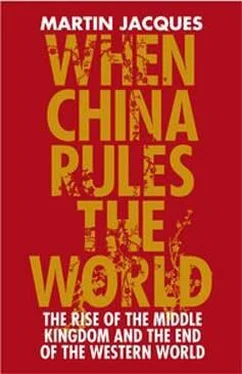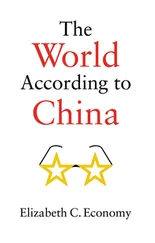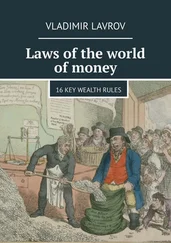[868]Yu Bin, ‘ China and Russia: Normalizing Their Strategic Partnership’, in Shambaugh, Power Shift , p. 232. China has also managed to agree all its borders with its East Asian neighbours, the outstanding exception being those with India.
[869]Shambaugh, Power Shift , p. 30; John W. Garver, ‘ China ’s Influence in Central and South Asia: Is It Increasing?’, in Shambaugh, Power Shift , p. 211; and Yu Bin, ‘ China and Russia ’, p. 236.
[870]Zhang Yunling, East Asian Regionalism and China (Beijing: World Affairs Press, 2005), pp. 31- 2.
[871]Ibid., p. 67.
[872]Shambaugh, ‘Return to the Middle Kingdom? China and Asia in the Early Twenty-first Century’, in Shambaugh, Power Shift , pp. 26- 7.
[873]Quoted in David C. Kang, China Rising: Peace, Power, and Order in East Asia (New York: Columbia University Press, 2007), p. 131.
[874]Anthony Reid, ‘Nationalisms in South East Asia ’, Asia Research Institute, National University of Singapore seminar paper, 24 January 2006.
[875]Shee Poon Kim, ‘East Asian New Regionalism: Toward Economic Integration? ’, Ritsumeikan International Affairs , 5, 2003, p. 70.
[876]Zhang Yunling, East Asian Regionalism and China , p. 3; Shee Poon Kim, ‘The Political Economy of Mahathir’s China Policy: Economic Cooperation, Political and Strategic Ambivalence’, Annual Review of International Studies , 3 (2004), p. 7.
[877]Shambaugh, ‘Return to the Middle Kingdom?’, p. 27.
[878]www.aseansec.org/16646.htm; and Wang Gungwu, ‘ China and Southeast Asia ’, p. 204.
[879]Zhang Yunling, East Asian Regionalism and China , p. 18.
[880]Shambaugh, Power Shift , p. 32; and Callahan, Contingent States , p. 71.
[881]Rex Li, ‘Security Challenge of an Ascendant China: Great Power Emergence and International Stability’, in Zhao, Chinese Foreign Policy , p. 28.
[882]Callahan, Contingent States , p. 66. An 8,000-strong contingent of Marines is based on Hainan Island for the purpose of defending China ’s claims.
[883]Zhang Yunling, ed., Designing East Asian FTA: Rationale and Feasibility (Beijing: Social Sciences Academic Press, 2006), p. 61; Nobutoshi Akao, ‘Re-energizing Japan’s Asean Policy’, AJISS-Commentary , 2 August 2007, posted on www.jiia.or.jp/en.
[884]Chu Shulong, ‘US Security Strategy in Asia and the Regional Security Regime: A Chinese View’, paper for IIPS International Conference, Tokyo, 30 November — 1 December 2004.
[885]Zhang Yunling, East Asian Regionalism and China , pp. 24, 29.
[886]David M. Lampton, ‘ China ’s Rise in Asia Need Not Be at America ’s Expense’, in Shambaugh, Power Shift , p. 312.
[887]Kim, ‘East Asian New Regionalism’, p. 65.
[888]Zhang and Tang, ‘ China ’s Regional Strategy’, pp. 52-3.
[889]Michael Yahuda, ‘The Evolving Asian Order: The Accommodation of Rising Chinese Power’, in Shambaugh, Power Shift , p. 349.
[890]Jim O’Neill et al., ‘ China and Asia ’s Future Monetary System’, Goldman Sachs Global Economics Paper , 129 (12 September 2005), p. 11; for details of the Chiang Mai Initiative, see www.unescap.org/pdd/publications/bulletin2002/ch8.pdf.
[891]Zhang Yunling, East Asian Regionalism and China , p. 54.
[892]Ibid., p. 29; also Martin Wolf, ‘Asia Needs the Freedom of Its Own Monetary Fund’, Financial Times , 19 May 2004.
[893]Interview with Zhu Feng, Beijing, 16 November 2005.
[894]Zhu Feng, ‘Regionalism, Nationalism and China’s Regional Activism in East Asia’, unpublished paper, 2006, p. 4; and Takashi Inoguchi, ‘Nationalism, Globalisation and Regional Order in North-East Asia: The Case of Japan at the Dawn of the Century’, paper presented at conference on ‘Nationalism and Globalisation in North-East Asia’, Asia Research Centre, London School of Economics, 12 May 2007,
[895]Ibid., p. 6.
[896]Hideo Ohashi, ‘China’s Regional Trade and Investment Profile’, in Shambaugh, Power Shift , p. 72; Guillaume Gaulier, Françoise Lemoine, Deniz Ünal-Kesenci, ‘China’s Integration in East Asia: Production Sharing, FDI and High-Tech Trade’, CEPII Working Paper No. 2005 - 09 , pp. 35- 6.
[897]Wang Zhengyi, ‘Contending Regional Identity in East Asia: ASEAN Way and Its Implications’, unpublished paper, 2001, pp. 12–15. World Bank, The East Asian Miracle: Economic Growth and Public Policy (New York: Oxford University Press, 1993), Chapters 1, 4.
[898]Gaulier, Lemoine and Ünal-Kesenci, ‘ China ’s Integration in East Asia ’, p. 34.
[899]Zhang and Tang, ‘ China ’s Regional Strategy’, p. 51.
[900]Interview with Zhang Yunling, Beijing, 17 May 2006.
[901]Lampton, ‘ China ’s Rise in Asia Need Not Be at America ’s Expense’, p. 311.
[902]Zhang and Tang, ‘ China ’s Regional Strategy’, p. 62.
[903]Lampton, ‘ China ’s Rise in Asia Need Not Be at America ’s Expense’, p. 310.
[904]Jane Perlez, ‘Forests in Southeast Asia Fall to Prosperity’s Ax’, New York Times , 29 April 2006; ‘ China and the East Asia Survey’, The Economist , 5 May 2007.
[905]Zhang and Tang, ‘ China ’s Regional Strategy’, p. 62; and Ohashi, ‘ China ’s Regional Trade and Investment Profile’, p. 76.
[906]Lampton, ‘ China ’s Rise in Asia Need Not Be at America ’s Expense’, p. 311.
[907]Zhang and Tang, ‘ China ’s Regional Strategy’, p. 54.
[908]Interview with Zhang Yunling, Beijing, 17 May 2006.
[909]Interview with Yu Yongding, Singapore, 3 March 2006; Yu Yongding, ‘The Interactions between China and the World Economy’, Nikkei Simbon Symposium, 5 April 2005, pp. 5, 7; Jim O’Neill et al., ‘ China and Asia ’s Future Monetary System’, p. 13.
[910]Ibid., p. 5; interview with Yu Yongding, Singapore, 3 March 2006.
[911]Joshua Kurlantzick, Charm Offensive: How China’s Soft Power is Transforming the World (New Haven: Yale University Press, 2007), pp. 105- 6.
[912]Clyde Prestowitz, Three Billion New Capitalists: The Great Shift of Wealth and Power to the East (New York: Basic Books, 2006), pp. 229-30.
[913]Lampton, ‘ China ’s Rise in Asia Need Not Be at America ’s Expense’, pp. 307, 317.
[914]David Shambaugh, ‘ China Engages Asia: Reshaping the Regional Order’, International Security , 29: 3 (Winter 2004/5), p. 64.
[915]Kurlantzick, Charm Offensive , p. 98.
[916]Ibid., pp. 99-100; ‘ China ’s “Soft Power” Is Winning Allies in Asia ’, International Herald Tribune , 12 July 2007.
[917]Kurlantzick, Charm Offensive , pp. 102- 3.
[918]Shambaugh, ‘Return to the Middle Kingdom?’, p. 125.
[919]Quoted in Kang, China Rising , p. 127. This was a personal communication with the author.
[920]Kim, ‘The Political Economy of Mahathir’s China Policy’, pp. 1, 3–4, 11, 15–16; Wang Gungwu, ‘ China and Southeast Asia’, p. 191; and Garver, ‘ China ’s Influence in Central and South Asia,’ pp. 219- 20.
[921]Wang Gungwu, ‘ China and Southeast Asia ’, pp. 194, 198.
[922]Kim, ‘The Political Economy of Mahathir’s China Policy’, pp. 10–12.
[923]Ibid.
[924]Amy Chua, World on Fire: How Exporting Free Market Democracy Breeds Ethnic Hatred and Global Instability (London: William Heinemann, 2003), pp. 25–44.
[925]Jae Ho Chung, ‘ China ’s Ascendancy and the Korean Peninsula: From Interest Revaluation to Strategic Realignment?’, in Shambaugh, Power Shift , pp. 151-62; Kang, China Rising , Chapter 5.
Читать дальше












